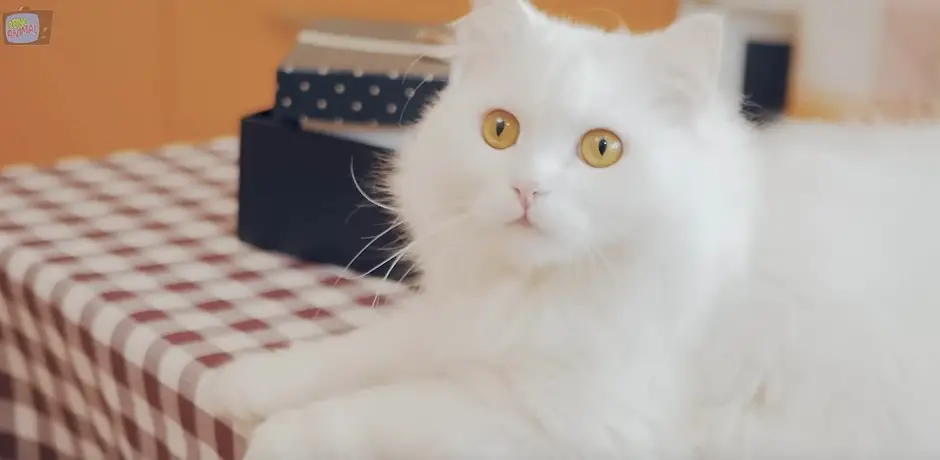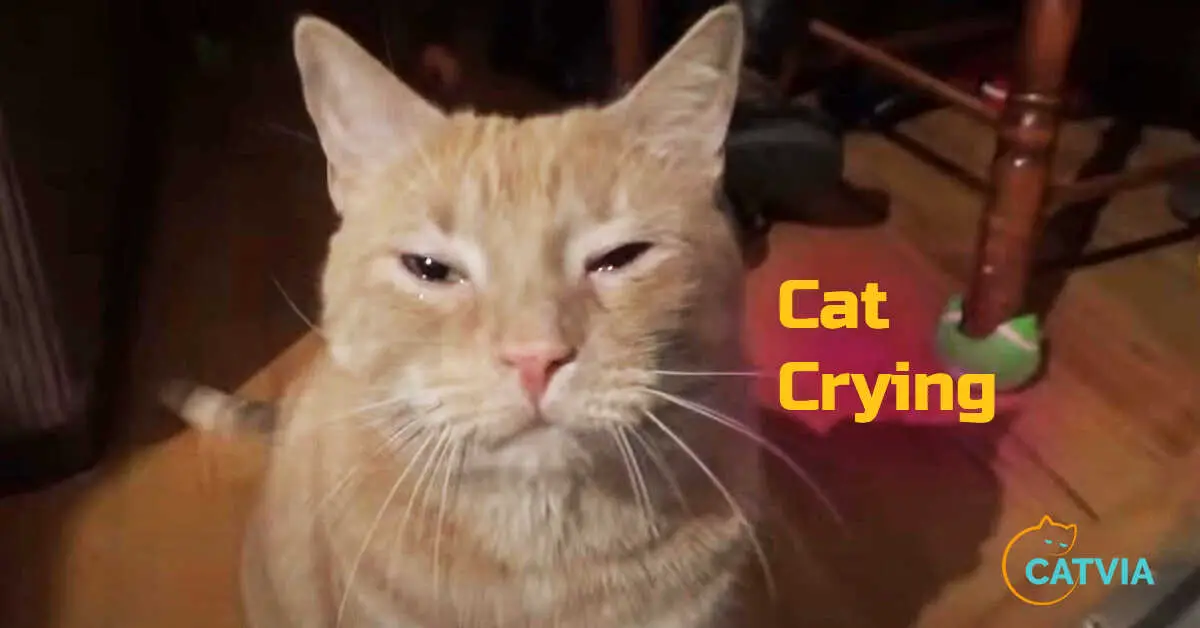Cats knead as a comforting behavior learned during kittenhood, mimicking actions from nursing. This rhythmic pressing with their paws against soft surfaces or your lap may be a sign of contentment, relaxation, or an attempt to mark their territory with scent glands in their paws.
In most cases, cat kneading is entirely normal and indicative of a happy, relaxed feline. However, if your cat’s kneading behavior changes suddenly or is accompanied by signs of discomfort, it’s advisable to consult with a veterinarian to rule out any underlying health issues.
Why Do Cats Knead?
Cat kneading is a normal behavior and is often associated with contentment and relaxation. It is an instinctive trait in cats, who often knead on a soft surface, such as a blanket, other cats, or your lap.
There are a few concept as to why cats knead, but no one really knows for sure.

1. Kittenhood Nostalgia
The most prevalent theory suggests that kneading is a behavior cats develop in kittenhood. Nursing kittens knead their mother’s belly to stimulate milk flow. The rhythmic motion of kneading serves a practical purpose during the early stages of a cat’s life, ensuring they receive nourishment from their mother.
2. Comfort and Contentment
As kittens, cats associate kneading with the comforting feeling of nursing. This association persists into adulthood, and cats often knead when they feel content, secure, and relaxed. It’s a way for them to recreate the soothing sensations of kittenhood, expressing a sense of comfort and well-being.
3. Scent Gland Activation
Cats have scent glands in the soft pads on the bottoms of their paws. When they knead, they release pheromones from these glands onto the surface they are kneading. This behavior is a way for cats to mark their territory, leaving behind their scent as a form of communication.
4. Stretching and Flexing Muscles
Kneading is not only a means of communication but also serves a practical purpose for cats. The repetitive motion allows them to stretch and flex the muscles in their paws and shoulders. This activity can be particularly beneficial after periods of inactivity, helping to maintain muscle tone and flexibility.
5. Contentment and Happiness
Cats often knead when they are in a state of contentment. If your cat kneads you, consider it a sign that they feel safe and secure in your presence. It’s a bonding behavior that showcases trust and affection.
6. Stress Relief
Cats may also knead as a way to cope with stress or anxiety. The rhythmic motion can have a calming effect, and stressed cats may use kneading as a self-soothing mechanism to alleviate tension.
7. Attention-Seeking Behavior
Some cats knead to get their owner’s attention. If your cat associates kneading with receiving affection or treats, they may engage in this behavior as a means of communication, expressing a desire for interaction.
Also Read: Why my cat meows for no reason?
Is My Cat’s Kneading Normal?
In the vast majority of cases, cat kneading is entirely normal and harmless. It is a natural behavior that is deeply ingrained in their instincts and serves various purposes, as discussed above.
However, there are situations where kneading might be a cause for concern:
Excessive Kneading
While occasional kneading is normal, if your cat is kneading excessively or for prolonged periods, it might be worth observing. Excessive kneading can sometimes be a sign of discomfort or an underlying health issue, such as pain or anxiety.
Accompanied by Aggression or Pain
If your cat displays signs of aggression or pain while kneading, such as growling, hissing, or vocalizing, it could indicate an issue. Cats may knead when they are unwell or in pain, and any sudden changes in behavior should prompt a visit to the veterinarian.
Behavioral Changes
If your cat’s kneading behavior is accompanied by other behavioral changes, such as a lack of appetite, lethargy, or avoiding social interactions, it may be indicative of an underlying problem. Consult with your veterinarian to rule out any health issues.
What Does It Mean When a Cat Kneads into You?
When a cat kneads into you, it is usually a sign of affection. The cat may be trying to show you how much it cares for you or may simply enjoy physical contact.
Some cats also knead as part of their grooming routine, so if your cat is kneading into you while it licks its fur, it is probably just trying to keep clean!
Should I Let My Cat Knead Me?
If you’re a cat owner, you’ve probably been on the receiving end of your kitty’s kneading behavior. But what does this affectionate action mean? Let’s take a closer look at why cats knead and whether or not you should let them do it to you.
Whatever the reason, if your cat enjoys kneading on you, there’s no harm in letting it continue. Just be sure those claws are trimmed first!
How Can I Tell If My Cat Is Kneading Me?
Cats typically display a few behaviors when they’re ready to start kneading: They’ll often purr loudly and rub their heads against you as a sign of affection first. Then they’ll settle down in your lap and begin rhythmically pressing one paw over another into your leg or stomach area.
Some even close their eyes and drift off into blissful sleep while continuing to work those little paws!
Why Do Cats Knead Blankets?
When a cat kneads a blanket (or any other soft surface), they’re usually doing it for one of two reasons: to mark their territory, or because they’re feeling happy and content.
The act of kneading is instinctive for cats – it’s something they learn to do from a young age when they’re nursing from their mother.
When they knead, they push their scent into the fabric of the blanket (or whatever else they’re kneading), which serves as a way of claiming that space as their own.
It’s also thought that the rhythmic motion of kneading has a calming effect on cats, which is why many of them will do it when they’re feeling relaxed and content.
Also Read: What does It Mean if a Cat is Purring?

Why Do Cats Knead And Purr?
When a cat kneads and purrs, it’s usually a sign of contentment. Cats have scent glands in their paws, so when they knead they’re actually marking their territory with their own unique scent.
It’s also thought that the rhythmic motion of kneading helps cats relax and even fall asleep.
What to do if Cat Kneading
Provide Soft Surfaces
Cats prefer to knead on soft and comfortable surfaces. Offering cozy blankets or cat beds can encourage this behavior. If your cat likes to knead you, consider placing a soft blanket on your lap.
Positive Reinforcement
If your cat kneads you gently and you find it enjoyable, respond with positive reinforcement. Petting or giving treats can strengthen the association between kneading and positive interactions.
Respect Boundaries
While kneading is generally a harmless behavior, be mindful of your cat’s comfort level. Some cats may prefer to knead without being touched. If your cat seems uncomfortable, allow them to knead without interference.
Provide Stress Relief
If your cat kneads due to stress, create a calm environment with a comfortable bed, toys, and spaces where they can retreat. This can help reduce anxiety-related kneading.
Conclusion
In conclusion, cat kneading is a multifaceted behavior with roots in both instinct and emotion. Understanding why cats knead allows us to appreciate this unique aspect of feline behavior and respond appropriately to our feline friends’ needs.
While it’s generally a harmless and endearing behavior, staying attuned to changes in behavior and seeking veterinary advice when needed ensures the ongoing health and happiness of our beloved feline companions.
His professional interests include humane education, ethics, small animal behavior, and veterinary. As a pet lover from school life, having grown up with two cats and a dog. If he isn’t spending time with his friends and family, Justin enjoys traveling. Learn more about Justin here.


